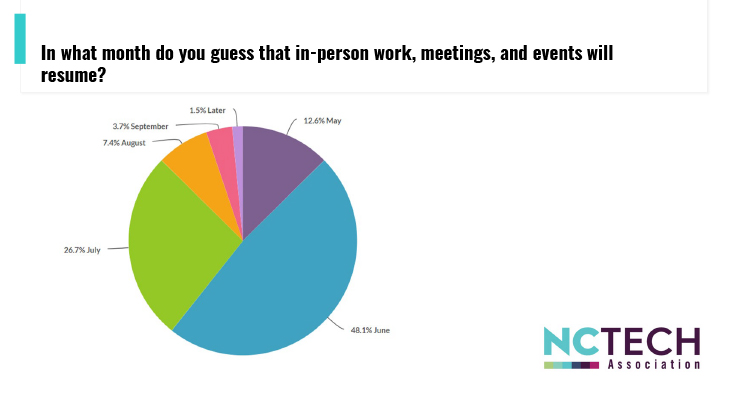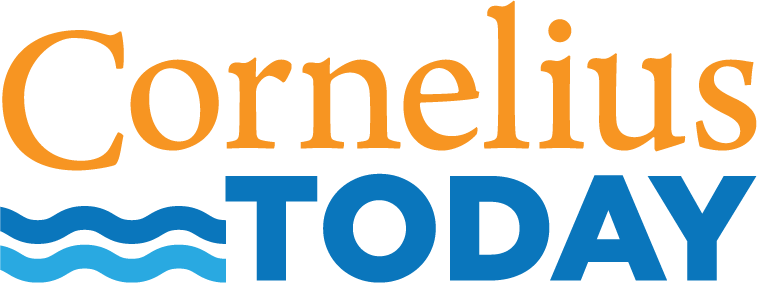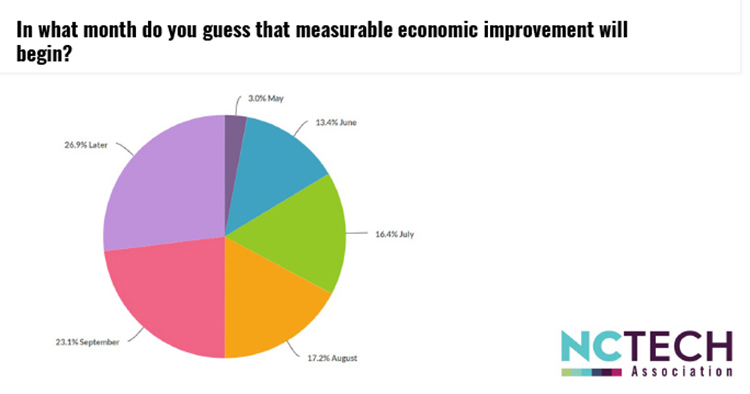Tech execs mixed on when economy will improve

Almost have predict meetings/in-person work resume in June
April 10. Nearly half of North Carolina’s technology leaders predict business and social activity—including in-person meetings—might start to return to pre-shutdown levels in June. Another quarter said July.
Only 2 percent predicted later than September, according to a poll conducted by the North Carolina Technology Association focusing on the business effects of the COVID-19 pandemic.
Gov. Roy Cooper issued a stay-at-home order beginning Monday, March 30 until April 29. It directed people to stay at home except to visit essential businesses, exercise outdoors or to help a family member.
The NC tech sector appears to be faring better than other parts of the economy. Sixty percent of those polled report that demand for their offerings has increased or remained neutral, with 40 percent indicating a reduction in business.
Three quarters of the NC technology respondents said 90 percent or more of their employees are working from home. Half of the respondents predict that working from home will become more common due to the “long-term aftermath” of the stay-at-home orders presently in effect.
Some 52 percent said their organizations have frozen hiring, while 40 percent said that their organizations are continuing to hire.
Only 7 percent reported that their employers are exploring or implementing furloughs, layoffs, or compensation reductions.
Predictions on when the economy would see measurable rebound were mixed.
Thirty percent anticipate improvement showing up in June or July, while 41 percent expect things won’t improve until August or September.
A quarter said better economic conditions will begin to show up later than September.
Regardless of when it happens, two-thirds predicted a “U-shaped” recovery, with economic activity gradually bottoming out, then beginning to recover. A third predict a “V-shaped” recovery with a quick pivot to accelerated growth).
The biggest challenges include lack of in-person interaction and bandwidth capacity at homes.
Other issues around the new normal:
Unclear/inaccurate/conflicting information from federal officials.
Delayed or lost revenue
Delays or lack of availability of technology hardware
Keeping employees’ morale and productivity high
Forecasting future timing/levels of sales and revenues
Navigating the work from home environment





